AQA GCSE Life cycle of a star(Physics)
Life cycle of a Star
Birth of a star
Stars, including our Sun are formed from a nebula.
A nebula is a cloud of gas and dust. It mostly gas, with some dust.
Nebula shown in the image below:
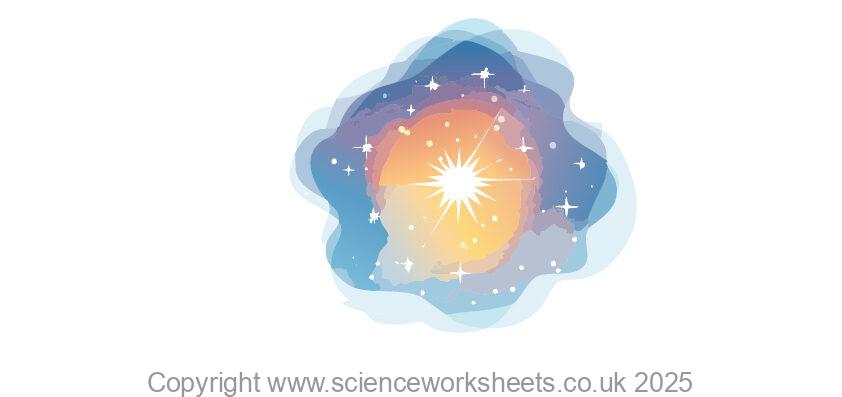
The gas and dust particles in the nebula have mass, so there is gravitational attraction between the particles. As a result gravity pulls the gas and dust together, causing the material to clump and form a denser region called a protostar.
Protostar shown in the image below:
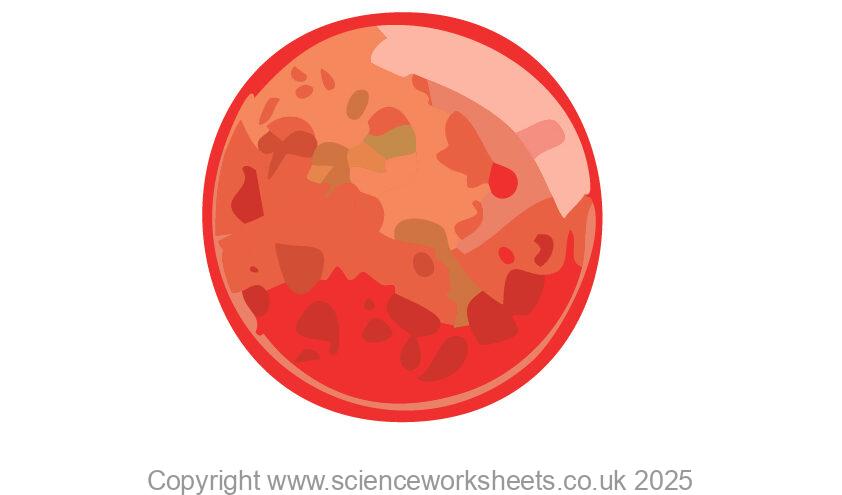
As the protostar becomes denser, the temperature increases. Once hot and dense enough, nuclear fusion starts in the core.
Once fusion of hydrogen into helium begins, a new main-sequence star is born. This process releases huge amounts of energy and light.
A main Sequence star is shown below.
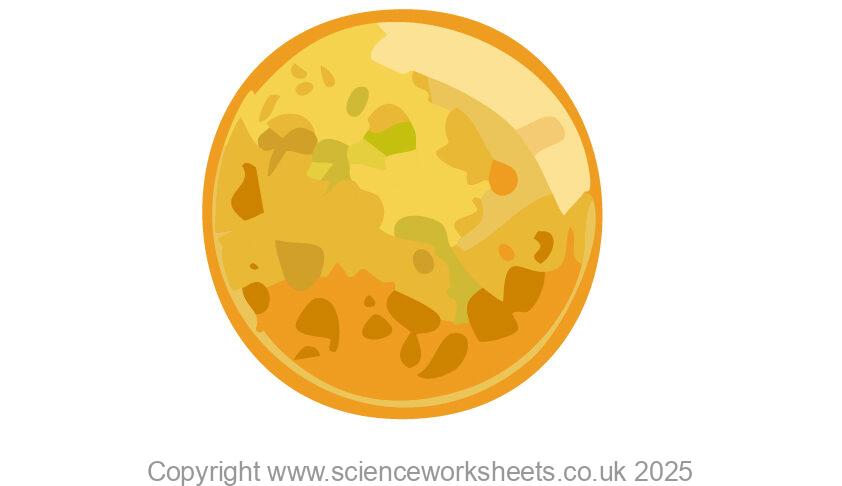
Maintaining stable size of a main sequence stars
Our Sun is a main sequence star and it maintains a relatively stable size.
Due to nuclear fusion of hydrogen to helium, there is an outward force of radiation from the core of the star.
However, as the star has a mass, there is an inward force of gravity that tries to pull the star inward.
Stars in main sequence will remain a relatively stable size because the outward force of radiation is balanced by the inward force of gravity.
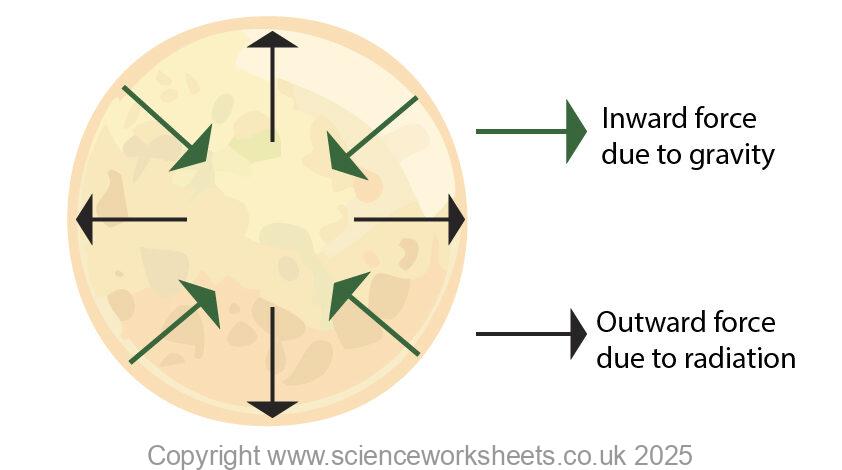
This does assume that nuclear fusion continues to provide the outward force of radiation. At the end of the main sequence stage the hydrogen nuclei runs out, so outward force of radiation decreases.
Due to inward force of gravity the core of the star collapses, causing the core to heat up. This causes the outer layers to swell leading to the formation of a red giant or red supergiant
Red giant or Red super giant.
Stars that are of a similar mass to our Sun will form a red giant after their main sequence has finished.
Stars that have a mass much greater than our Sun will form a red supergiant once their main sequence has finished.
Summary flow chart
| Stars of a similar mass to our Sun | Stars that have a mass much greater than our Sun |
|---|---|
| Once hydrogen is used up, main sequence stage ends, core collapses, outer layers swell to form a red giant | Once hydrogen is used up, main sequence stage ends, core collapses, outer layers swell to form a red supergiant |
| The helium will be fused to form other light elements. No elements will be formed that has an atomic mass greater than that of iron. This is because up to iron energy is released during the fusion process, beyond iron energy is needed overall for the fusion process. | The red supergiant will collapse inwards, causing huge amounts of compression. This allows for the fusion of nuclei to form nuclei heavier than iron such as uranium. |
| Once all of the light elements have been fused, all the fusion stops, so there is no longer any outward force due to radiation. The inward force of gravity causes the star to collapse in on itself, heating up to form a white dwarf | Suddenly, this compression is reversed in an explosion called a supernova. |
| Over time the white dwarf will then cool to form a black dwarf. | The supernova will distribute these heavy nuclei. This is why we have uranium on Earth, its due to a previous supernova. |
| During the supernova, the core of the star is compressed, and the outer layers are flung off. The core is compressed into either a neutron star, or if a very massive star was present then a black hole is formed. |
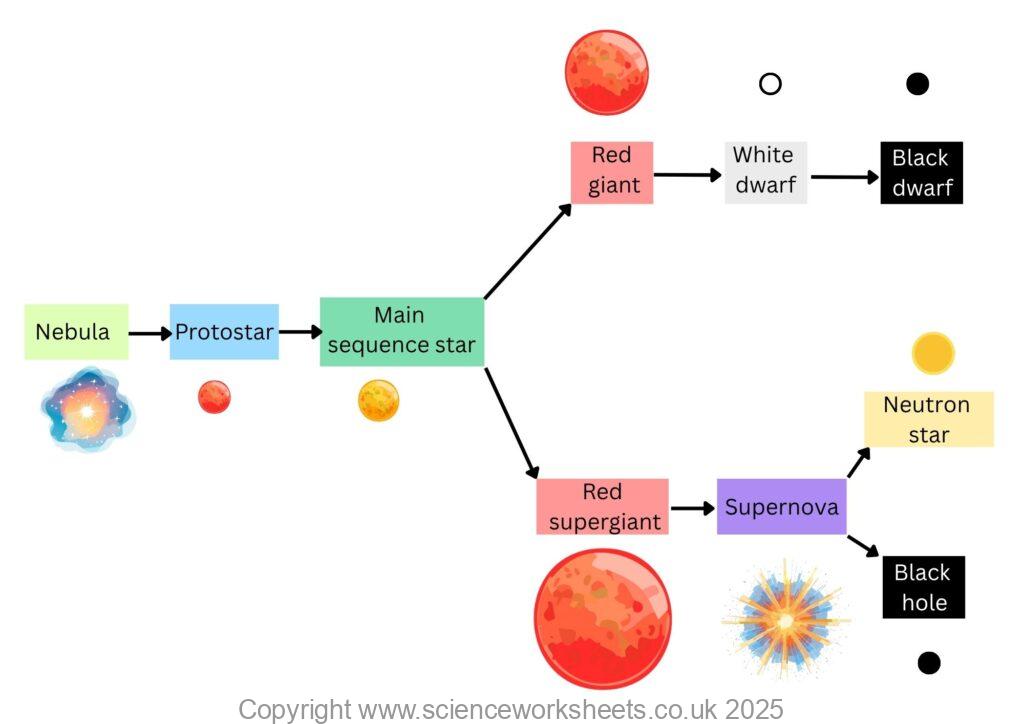
Practice Questions
1.What is the name of the large cloud of gas and dust where stars form?
2.What type of nuclear reaction happens in the core of a main sequence star?
3.What two forces are in balance during the main sequence phase of a star’s life?
4.What is the final stage for a low-mass star like the Sun?
5.What stellar event can form either a neutron star or black hole?
6.Why does a main sequence star eventually become a red giant or red supergiant?
7.Why can only high-mass stars produce elements heavier than iron?
8.What causes a white dwarf to slowly become a black dwarf?
9.Explain why massive stars have shorter lifespans even though they contain more fuel.
10.How does the death of a high-mass star contribute to the formation of new stars and planets?
11.Suggest what might happen to a star that is not massive enough to start hydrogen fusion?
12.Why doesn’t a white dwarf collapse further into a neutron star or black hole?
13.If a star produces mostly carbon and oxygen in its core, what does this suggest about its mass and stage?
14.Why is the presence of iron in a star’s core a ‘tipping point’ in stellar evolution?
15.How does the balance of gravity and radiation pressure influence the stability of a star?
16.Why is it accurate to say that humans are made from “star dust”?
17.Explain how a black hole forms, and why not all supernovae result in black holes.
18.What would happen if fusion in a main sequence star suddenly stopped?
19.How would the death of the Sun as a red giant affect the Earth?
20.Describe how the life cycle of stars is a key part of the recycling process of matter in the universe.
Absorption and Emission of EM Radiation
JJ Thomson and Plum pudding model
Ernest Rutherford and the Nuclear Model
Niels Bohr changing the Nuclear Model
Discovering the Proton and Neutron
Measuring radiation from radioactivity
Radiation types and properties
Random nature of radioactive decay
Radioactive contamination or irradiation
Hazards of contamination and irradiation
Studies on the effects of radiation on humans
Different half lives of radioactive isotopes
Nuclear Fission Chain Reaction
Writing nuclear fission equations
Drawing ray diagrams for a concave lens
Drawing Ray Diagram to produce a virtual image for a convex lens
Drawing ray diagram to produce a real image for a convex lens.
Specular and Diffuse Reflection
Seeing Coloured Objects Part 2
Viewing objects through coloured filters
Transparent, Translucent and Opaque